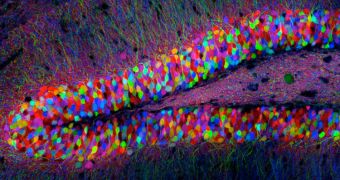A group of neuroscientists at the Massachusetts Institute of Technology (MIT), in Cambridge, says that memory engrams are real, and argue that they leave behind physical traces of their creation. The team was recently able to find the physical neural networks underlying these imprints.
A memory engram is a complex construct, featuring memory traces, time and location stamps, as well as numerous sensations experienced as the memory was formed. For years, scientists have been trying to figure out whether engrams are only conceptual constructs, or if they have a physical foundation.
The new investigation appears to favor the second explanation. In order to arrive at this conclusion, experts used optogenetics, an emerging area of science that uses light to change the genetic activity of a living cell, or an entire organism.
What experts found was that memories appear to reside in very well-defined areas of the human brain. If small numbers of the neurons in that specific region are activated, then the entire area lights up, leading to a complete recall of all the data stored within.
“We demonstrate that behavior based on high-level cognition, such as the expression of a specific memory, can be generated in a mammal by highly specific physical activation of a specific small subpopulation of brain cells, in this case by light,” expert Susumu Tonegawa explains.
“This is the rigorously designed 21st-century test of Canadian neurosurgeon Wilder Penfield’s early-1900s accidental observation suggesting that mind is based on matter,” the scientist goes on to say.
Tonegawa holds an appointment as the Picower Professor of Biology and Neuroscience at MIT. He was also the lead author of a new paper detailing the findings, which was published in the March 22 issue of the top journal Nature.
“We wanted to artificially activate a memory without the usual required sensory experience, which provides experimental evidence that even ephemeral phenomena, such as personal memories, reside in the physical machinery of the brain,” graduate student and paper coauthor, Steve Ramirez, adds.
The data obtained in the new study could have a host of practical applications, such as for example developing new treatments for neurodegenerative and neuropsychiatric disorders, including mild cognitive impairment and Alzheimer's disease.

 14 DAY TRIAL //
14 DAY TRIAL //